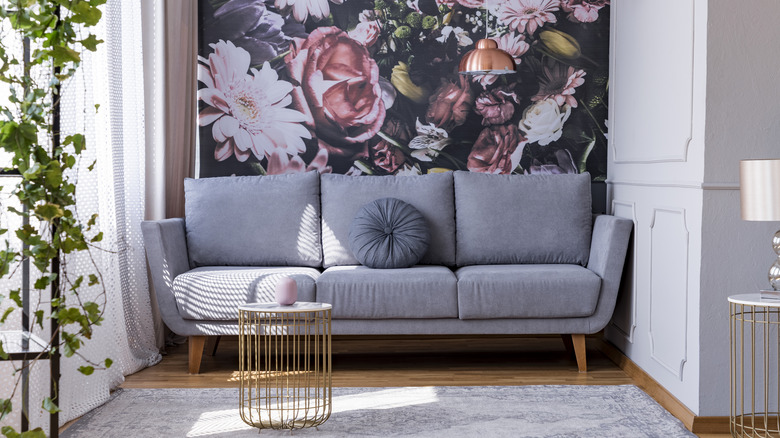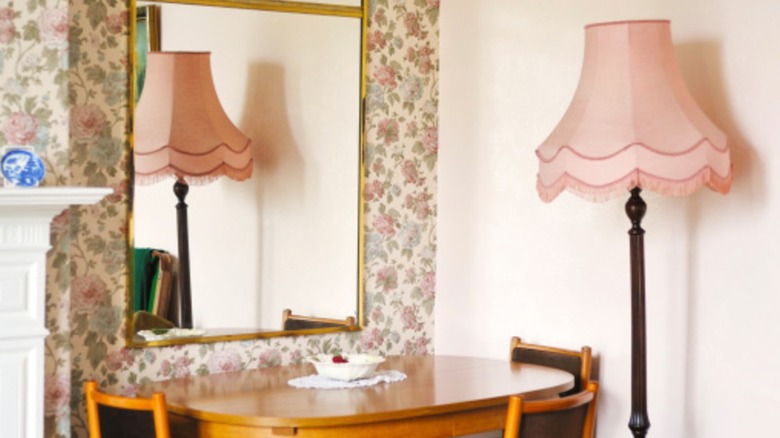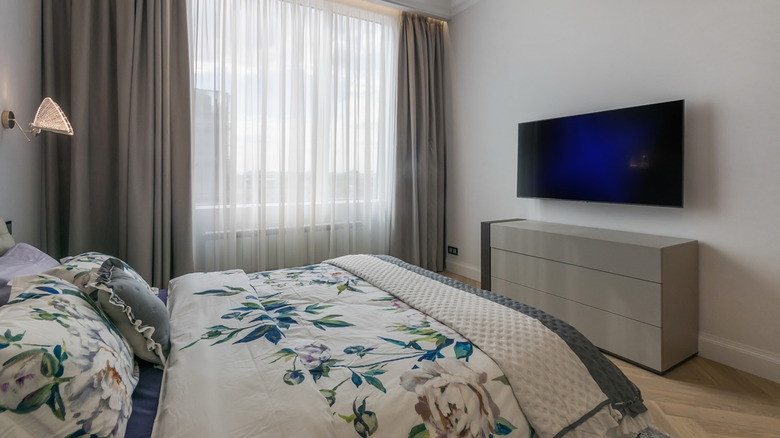Florals Are In, But One Styling Habit Is Holding You Back
We may receive a commission on purchases made from links.
Flowered wallpaper, draperies, and bedsheets might make you think of a super dated living room. In the 1950s, floral upholstery, usually featuring cabbage roses, was all the rage. But unlike other midcentury furniture that's now considered cool and vintage, these upholstered floral pieces did not stand the test of time. The 1960s and '70s also featured floral interiors but the look was entirely different, moving from soft, small roses, to large, bright daisies.
In the 1990s, florals came back thanks to the shabby chic trend. But they were used in moderation (a throw pillow, a tea-cup, a still-life print) next to neutral interiors for a less fussy look. Of course, the 1990s were — gasp — 30 years ago, which means those of you who embraced shabby chic decor could now be grandparents.
Florals are trending again, which may cause an instant gag reflex for some readers. However, there's a key to making florals feel modern and updated, and it's all about size. Small, chintzy florals evoke that grandma feel, while larger-than-life blooms are more up-to-date. Large-scale blooms can be photorealistic or abstract, and look chic in moody shades like black, berry, and purple. Just like the move from 1950s to '60s florals, today's floral approach is bigger, more colorful, and goes beyond roses with patterns featuring all kinds of flora, fauna, and even wildlife.
Cyclical trends are a good thing -- and here's why
Like fashion, interior design trends are cyclical. Trends typically sit on the sidelines for 20 to 30 years before returning, as interior design styles from the more recent past are "too close for comfort" and look outdated. But each time a trend comes back around, it's with a few tweaks. For instance, the bohemian interiors of the 1970s had an earthy color scheme of brown, mustard, and avocado, and entire rooms filled with wicker furniture. The boho style popular today incorporates bright hues like purple and electric blue, and still uses wicker, but thankfully, in moderation.
Cyclical trends are a good thing. If design styles never came back, you'd have to throw everything out of your home every decade or so and start over. You wouldn't hang on to the furniture you inherited from your parents, nor would you make a killing selling it at auction. And using vintage pieces in your decor is more eco-friendly than buying everything new.
However, innovation is also a good thing and why trends rarely return exactly as they were. We take the good (colorful bathroom tiles) and leave the bad (carpet in the bathroom), thus improving the look with each go-round. It allows homeowners to feel modern while still linking them to the past.
Tips for finding and using large-scale florals
Large-scale florals are very popular right now, so you should have no trouble locating the perfect pattern for your space. Anthropologie, Wayfair, and even Amazon have hundreds of wallpaper and bedding options in a variety of styles and colors. The Tyrot Store on Amazon features a line of affordable Boho Floral curtains and bedding, and this BOKEBEVE peel-and-stick wallpaper embraces the mushroom decor craze and large, moody floral trend in one design. Spoonflower is another great place to start, with thousands of floral prints to choose from. Find your favorite print, then purchase it as a pillow, bedding, curtains, wallpaper, table runner, table cloth, or napkins.
Big, bold florals are more overwhelming than small chintz, and not the best pattern to use for "drenching" a room. As wallpaper, it is best used as a stunning pop of design on an accent wall, nook, or even a ceiling. The look feels contemporary when paired with a solid color for contrast, for instance, using the pattern on curtains next to a solid wall in the same color scheme. Larger-than-life florals make a fantastic upholstered headboard, and add a pattern punch to plain bedding when used on throw pillows or a quilt.


